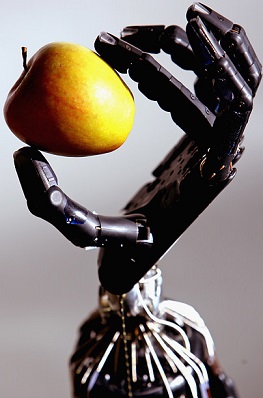Robot grasps next-gen needs
 Korean scientists have built a robotic hand so dextrous it can use scissors and tweezers.
Korean scientists have built a robotic hand so dextrous it can use scissors and tweezers.
The robotic hand integrates all of the components required for responsive movement, sensing and possesses high levels of dexterity.
The can be mounted onto existing commercial robot arms, and is capable of performing a wide variety of tasks from grasping an egg to using small tools.
The scientists behind the technology call it ILDA (integrated linkage-driven dexterous anthropomorphic).
The hand consists of 20 joints, allowing 15 degrees of freedom of movement, is capable of a fingertip force of 34 Newtons, weighs less than 1.1 kg, is compact, and is touch-sensitive.
Robotic hands have the potential to perform a wide variety of tasks.
However, developing hands without additional actuation parts - which enable the robot to move - while maintaining functions such as high levels of dexterity or the ability to grasp with appropriate force, is challenging. Additional actuation parts also make it difficult to integrate these hands onto existing robotic arms, thus limiting their use.
But on the ILDA hand, all parts are integrated, which means it can be attached to existing robotic arms without additional parts.
In a series of experiments, the researchers have demonstrated that the hand is capable of picking up objects of various shapes, grasping strongly enough to crush cans, or delicately enough to hold an egg.
The hand was also shown to be able to cut paper with scissors and pick up small objects using tweezers.
More details are accessible here.








 Print
Print